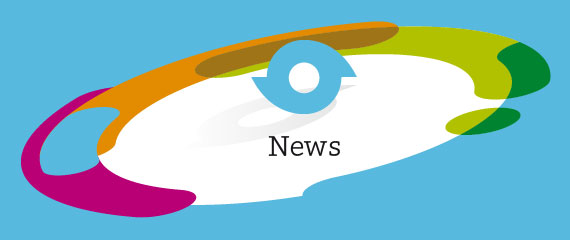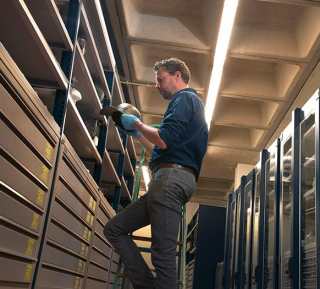After being closed for almost three months due to the corona pandemic, Dutch museums will open their doors again on the first of June. For Jasper de Bruin, curator at the National Museum of Antiquities (RMO) and also assistant professor at Leiden University, this means his exhibition ‘Romans along the Rhine’ will finally be on display.
After finishing the MA Roman Archaeology (University of Amsterdam), De Bruin completed a PhD on the Cananefates tribe at Leiden’s Faculty of Archaeology. ‘The Cananefates lived in the area that is now the province of Zuid-Holland’, he explains. ‘They present a good case study for the reaction of rural local groups to the Roman conquest. We tend to think of the Roman empire as a homogenous and well-connected imperium, but actually it took quite some time before local groups such as the Cananefates were integrated in this huge empire.’
This process of ‘Romanisation’ can be followed through the study of material culture. According to De Bruin, it is very important to study material remains: ‘Written sources are often biased. In the case of the illiterate Cananefates, all we know of them was written down by their Roman colonisers. Studying archaeological objects makes it possible to incorporate the perspectives of local tribes as well.’
De Bruin emphasises that a more inclusive history of the Roman Empire also means that we should look beyond its military aspects. ‘In the past, Roman archaeology was dominated by men who were mainly interested in forts and weapons’, he says. ‘The upcoming exhibition 'Romans along the Rhine' instead focusses on everyday life.’ In one of RMO’s educational videos, De Bruin talks about Roman games (in Dutch), for example. When asked for his personal favorite of the exhibition, he picks a large stone altar. ‘I find it fascinating because its inscription shows us where a Roman governor, born in Algeria, travelled for his career, thus illustrating the global character of the Roman Empire.’
The governor eventually dedicated an altar along the Rhine, which is the focus area of the exhibition. According to De Bruin, this area is particularly interesting because it marked the northern boundary of the Roman Empire. Therefore, he was involved in the nomination of parts of the remainders of this boundary as a UNESCO World Heritage Site. Right now, however, he is preoccupied with the preparations for the upcoming exhibition, which are thwarted by the corona virus: ‘It will be a challenge, but the museum sure is big enough for everyone to keep their distance!’
Interview by LeidenGlobal intern Merel Snoep
May 2020
Meet more experts at our expert page
> Photo on the right by Rob Overmeer/Rijksmuseum van Oudheden

